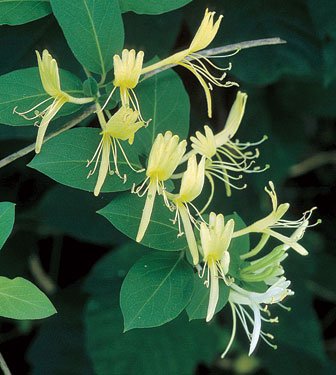Invasive plants at Nothern Virginia
Japanese Honeysuckle
How sweet the smell of honeysuckle - kind of takes you back to the barefoot days of long and lazy summers past. However, Japanese honeysuckle vines strangle our native vegetation leaving us nothing but a sticky mess.
Autumn Olive
Autumn olive does this by shading them out and by changing the chemistry of the soil around it, a process called allelopathy. Autumn olive’s nitrogen-fixing root nodules allow the plant to grow in even the most unfavorable soils.
Asian Wisteria
The hard woody vines twine tightly around host tree trunks and branches and cut through bark, causing death by girdling. On the ground, new vines germinating from seed or sprouting from rootstocks form dense thickets that smother and shade out native vegetation and impede natural plant community development.
Japanese Pasysandra
Japanese pachysandra spreads by underground stems called rhizomes. Plants that spread by rhizomes are notoriously aggressive. For example, if a plant is removed that spreads by rhizomes, any piece of the rhizome left behind can grow into a new plant.
Oriental Bittersweet
Oriental bittersweet climbs and overtakes native trees and shrubs. Twining vines can girdle trunks and branches. Dense vines add weight to tree canopies, leading to breakage. Plants spread from roots and seeds that are widely dispersed by birds and wildlife.
Wineberry
Wineberries can form dense thickets that are impassible due to the thorniness of the canes. Although most species in the Rubus genus form thickets, wineberry thickets have been found to grow more densely than those of native Rubus species. Wineberry out-can overtop native vegetation, blocking access to light.





